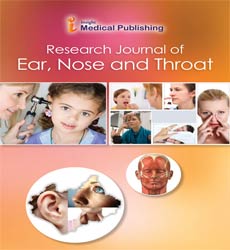Proposed modification to the Shamblin's classification of carotid body tumors: a single-center retrospective experience of 116 tumors
Abstract
Objectives: Carotid body tumors (CBTs) are rare head and neck neoplasms, we aimed to propose a modification to the Shamblin's classification of CBTs.
Materials and Methods: This retrospective study included 105 patients (116 CBTs) operated at our institution from March 2013 to July 2020. CBTs were divided by a modified Shamblin's classification into five subtypes (type I-V) based on the radiographic features. Correlations between modified classification and intraoperative bleeding, internal carotid artery (ICA) bypass and postoperative neural complications, as main outcomes, as well as other outcomes were analyzed.
Results: Surgeries for type V and type I CBTs had the most (median: 700ml, IQR: 375-1575 ml) and least (median: 20 ml, IQR: 20-50ml) bleeding, respectively. Intraoperatively, ICA bypass was needed in 41.7% (10/24) type V, 18.2% (8/44) type IV and 5.9% (1/17) type III lesions, but not in other subtypes (p= .001). Postoperatively, overall cranial nerve deficits (CND) was found most frequently in type V tumors (17/24, 70.8%) (p=.016). Permanent CND were found in 33.3% (8/24) type V and 4.5% (2/44) type IV lesions, but not in other subtypes (p=.001). Other outcomes including external carotid artery ligation, operation time, blood transfusion, postoperative intensive unit care and postoperative hospitalization also showed significant difference among different subtypes. Patients recovered uneventfully during a follow-up of 23.5±16.2 months except for one ipsilateral recurrence at 42 months after surgery.
Conclusions: The modified classification was correlated with surgical outcomes of CBTs and will be helpful for making surgical plans.
Open Access Journals
- Aquaculture & Veterinary Science
- Chemistry & Chemical Sciences
- Clinical Sciences
- Engineering
- General Science
- Genetics & Molecular Biology
- Health Care & Nursing
- Immunology & Microbiology
- Materials Science
- Mathematics & Physics
- Medical Sciences
- Neurology & Psychiatry
- Oncology & Cancer Science
- Pharmaceutical Sciences
